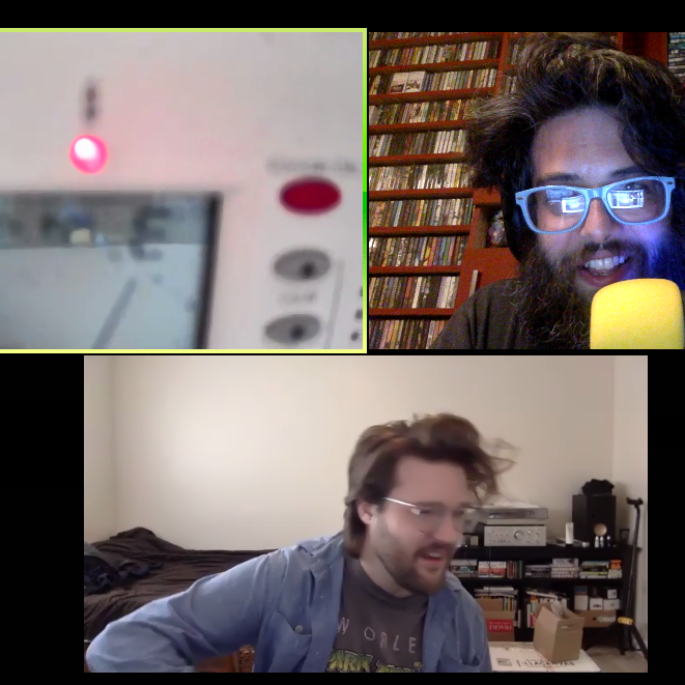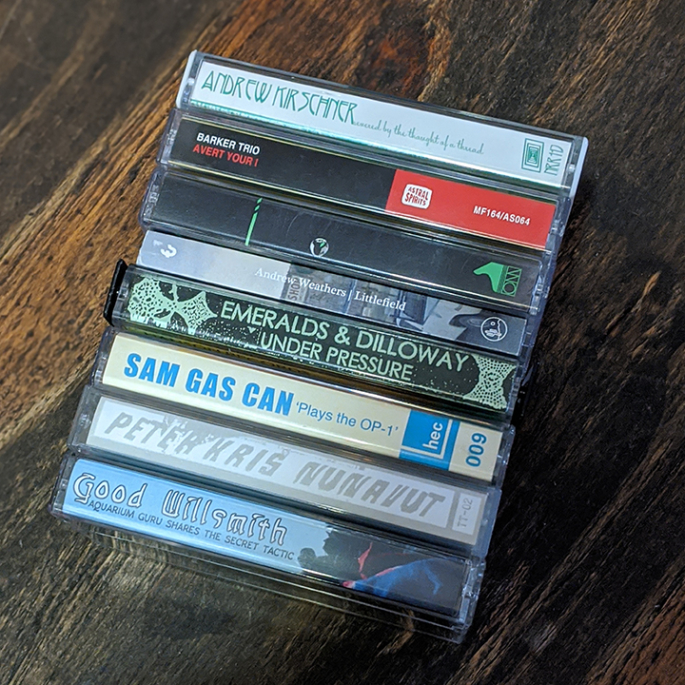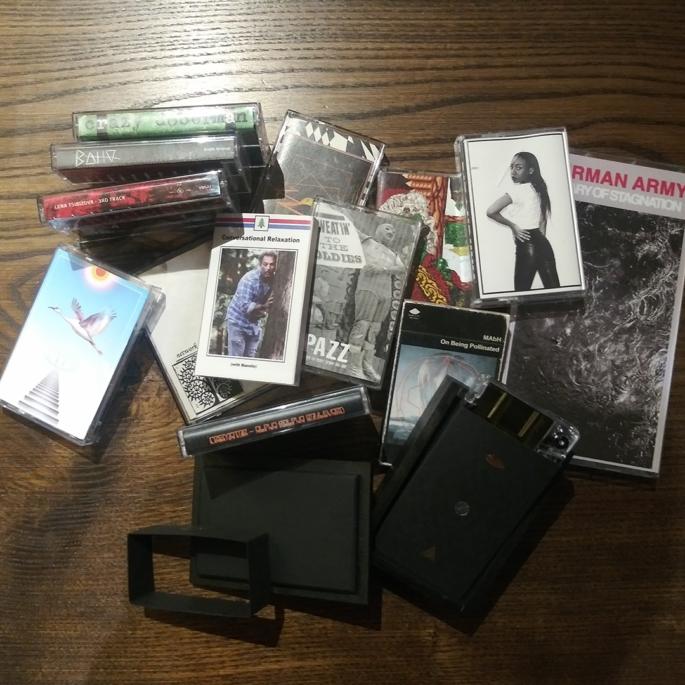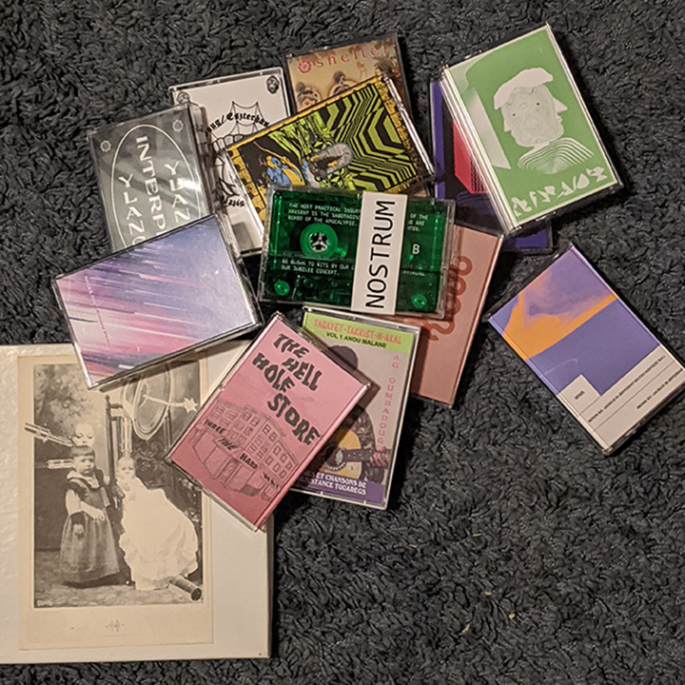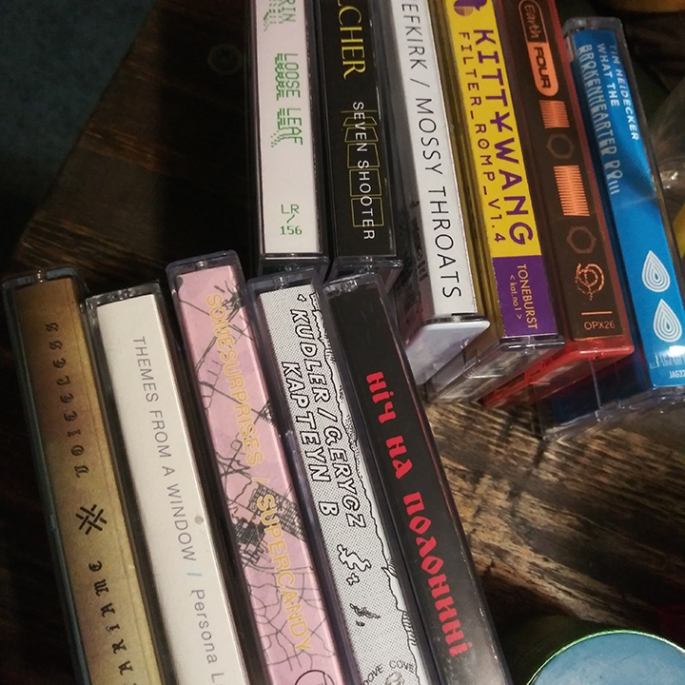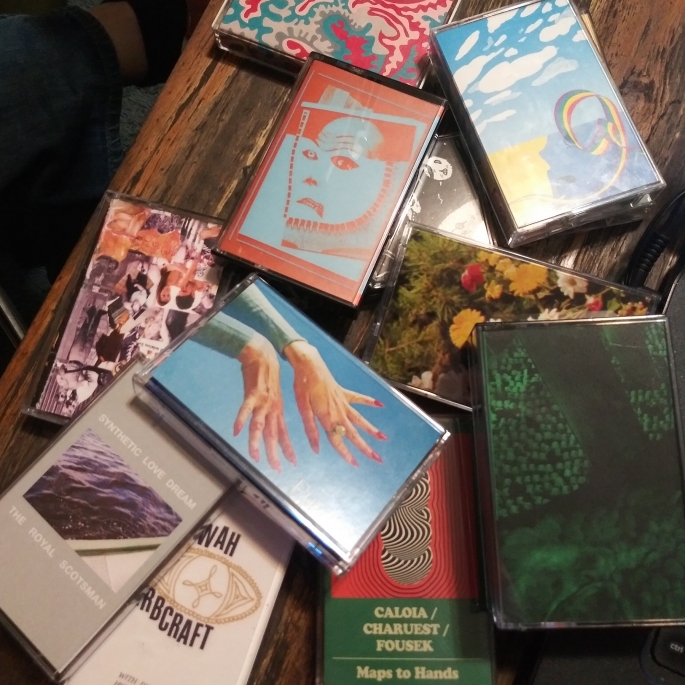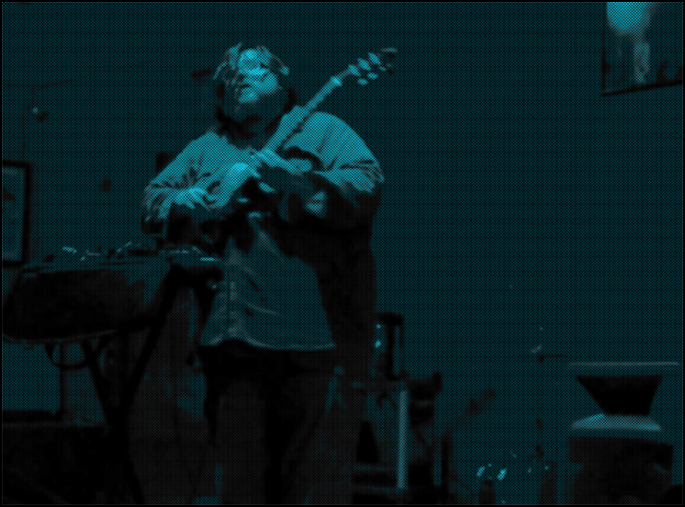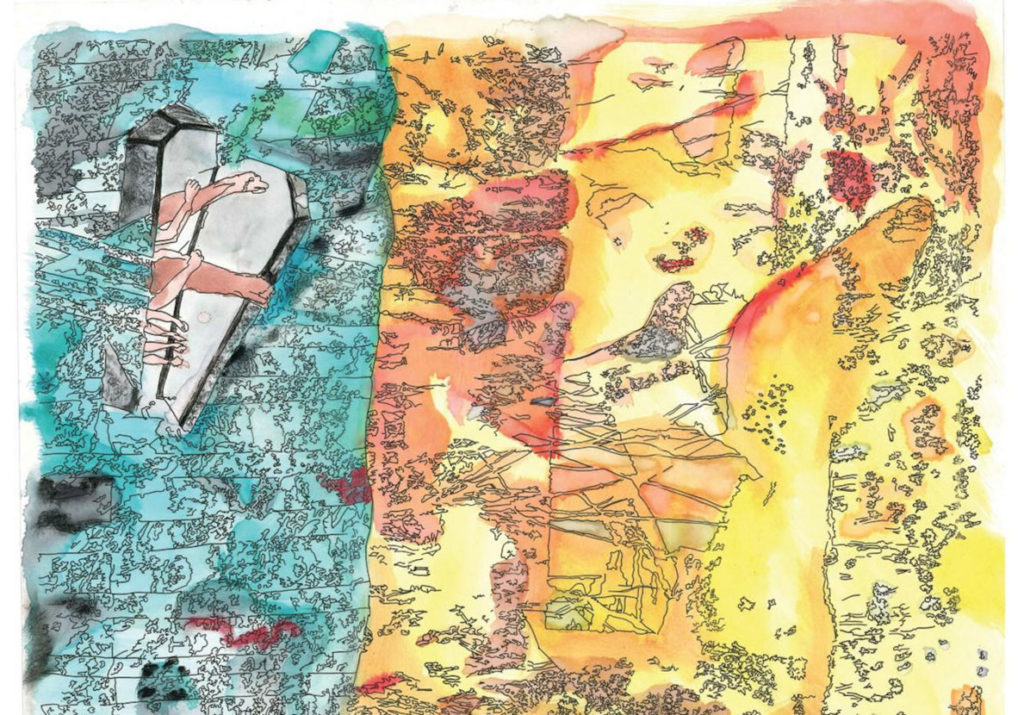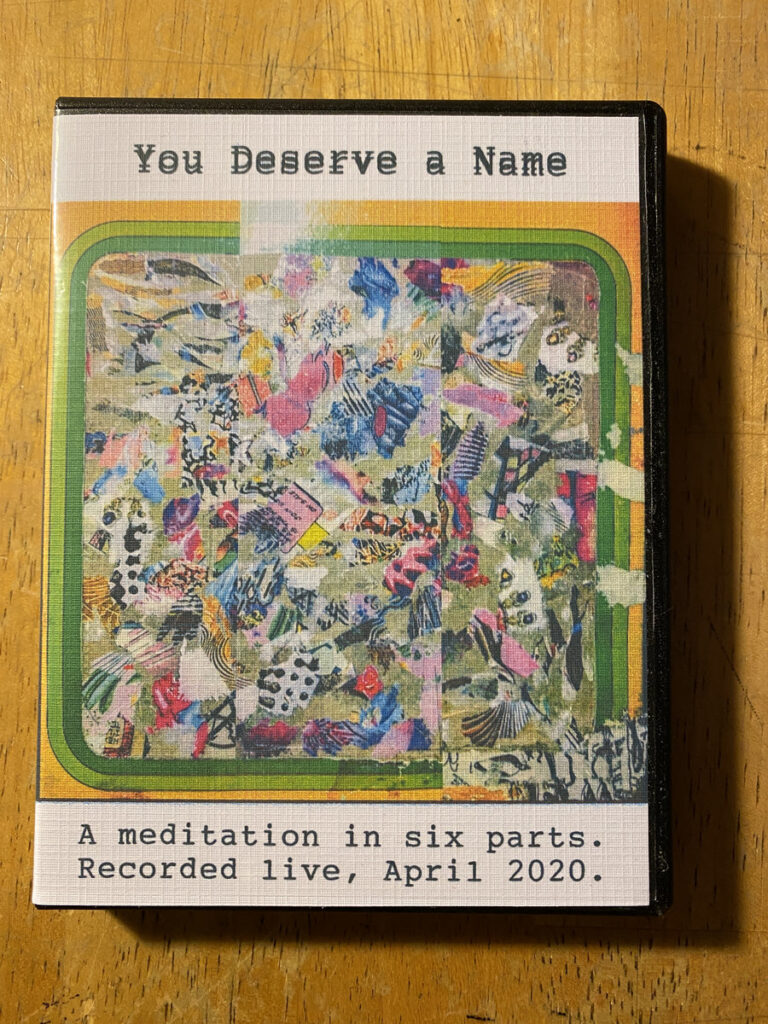3.19.21 by Matty McPherson
Yes, Warm Climates continues to remain a finished project post their 2013 Sun Ark cassette. Although, main songwriter, Seth Kasselman, has continued to channel Warm Climates’ stoned frivilosity in his own approach to future music endeavors. Kasselman may not hang out on his blogger like he used to — he’s digging up lost sounds every first Saturday of the month at 10PM PST on Nett Nett radio — while his UR Sound label drops is the occasional homespun goody. Last December though, he logged back on with Anteroom in Birch, a web of four electronic synth pieces crossed with tape hissed music concrete.
You might be thinking that 4 pieces is enough to figure every trick that Kasselman has up his sleeve; it’s still quite tricky to pin down, as each track brims with an amalgamation of ideas that are ever-shifting; don’t expect one track to hold itself together for ya! Side A’s two tracks “Degrees Of Used To” and “Are Lemming”, both feature cavernous drum arenas that are mystical and foreboding, and Kasselman mends both soundscapes up to climb towards the heavens. For the former, it means leading into a blistering synth drone, while for the latter, it continues to build an angular and playful dash of electronic bleeping n’ blooping.
Track one of side b is where things go haywire. Worlds collapse and rebuild like sandpaper for the first half of “Roadmaster Stitches”. Yet, just when it all seems that the tape is about to explode and disentangle from the deck, Kasslman arrives at a plane of clarity…on what sounds like an unstable 32 KBps connection. Of course, it continues to build like a spire, rumbling until it bursts! That sound of an unstable connection encompasses the last track “Centipede Cathedral”, which sounds like the aftermath of watching a spire go kablammo–or web page after web page of pop up crunchfire. Expect this time, it finally reaches a semblance of genuine peace. For the last several minutes, the track floats on the water, without a care in the world.
Edition of 50 available here
Related Links


